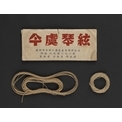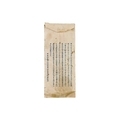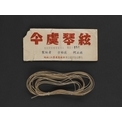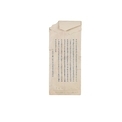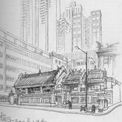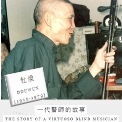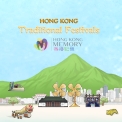In the late Qing Dynasty, the political situation in China was tumultuous, the value of its currency was unstable, and there were less qin players. As a result, string makers could no longer make any profit. By the early years of the Republic of China, Laosantai, the last Huihui Tang operator, closed down. The several thousand years of tradition of string making was lost, and no one knew how to make strings anymore. Wu Jinglue, a Shanghai qin player, and Zhuang Jiancheng, a Suzhou qin player, worked together with Fang Yuting, a maker of strings for other musical instruments in Suzhou to study the method of string making from the descriptions in ancient books. After several hundred trials over three years, a new generation of qin strings was produced in 1944. It was named “Jinyu Strings”, after the Jinyu Qin Society of Shanghai.
Strings in this section are Jinyu Strings at different times after 1949. They reflect changes in the political environment and the gradual decline of the brand.


